 |
Official Webpage |



ARM ENG |
|||||
|
|||||||
Turkey descends from Ottoman Empire (1299-1923). In the medieval ages the theoretical framework of astronomy in Ottoman Empire, as was the case in all Islamic world and Europe, was that set by Ptolemy and Aristoteles. An observatory equivalent to that of Tycho Brahe was founded in İstanbul (1570) by Taqi ad-Din, but could not survive for a sufficiently long time to make a strong impact. As no new observatory was built until 1873, astronomers in the Ottoman era were not able to follow up the scientific revolution in the Western world. Yet, astronomical observations, required for religious and practical purposes were done by local astronomers in each town.

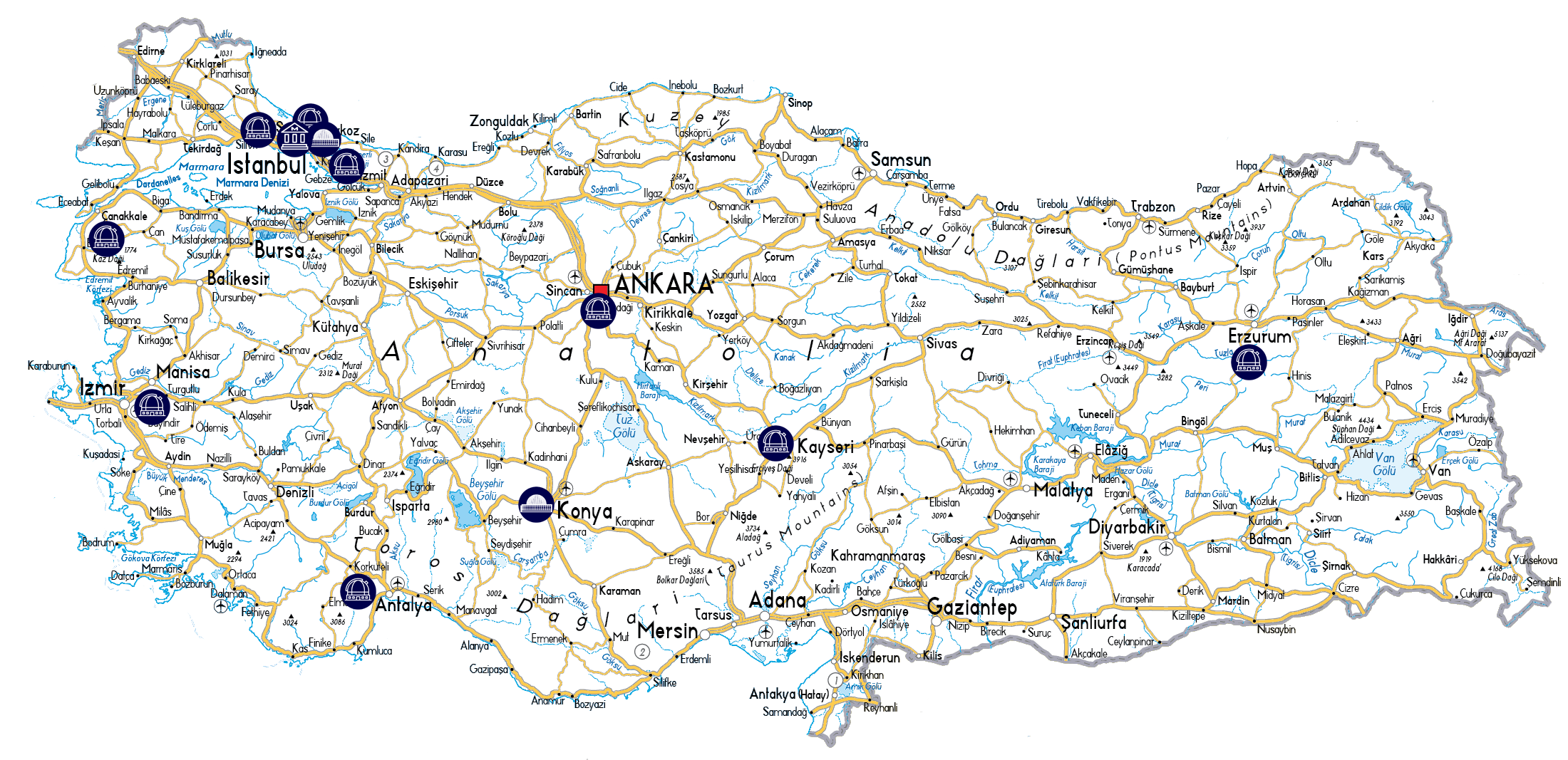
Kandilli Observatory, or more formally Kandilli Observatory and Earthquake Research Institute is a Turkish observatory, which is also specialized on earthquake research. It is situated in Kandilli neighborhood of Üsküdar district on the Anatolian side of Istanbul, on the top of a hill overlooking Bosporus.
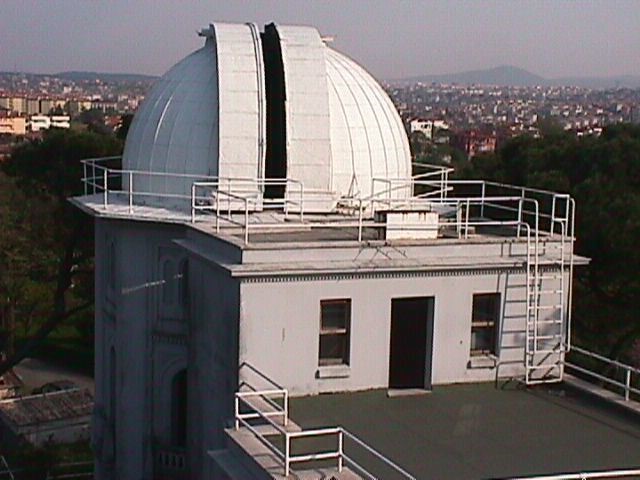
The observatory, named originally "Imperial Observatory" (Ottoman Turkish: Rasathane-i Amire) as established in 1868 in the Rumelian side of Istanbul, was dedicated mainly to weather forecasting and accurate timekeeping.
During the 31 March Incident in 1909, the observatory was destroyed by the rebels. Next year, however, Professor Fatin was tasked with the reestablishment of the observatory. He chose the present place as the location in of the observatory. Systematic research works began on July 1, 1911. After several name changes, the name "Kandilli Observatory, Astronomy and Geophysics" came into use in 1940. In 1982, the observatory was annexed to Boğaziçi University. Later, the institution was renamed Kandilli Observatory and Earthquake Research Institute (KOERI).
The Astronomy Laboratory, which can be visited within the scope of Kandilli
Observatory visit program, accepts school and group visitors every Wednesday and
Thursday during the academic year.
Department of Astronomy and Space Sciences and the Observatory of Istanbul University constitutes a modern complex for education, research and the public outreach activities. This is the first astronomy department in Turkey and the first observatory of the Republic of Turkey. Nowadays, with the inauguration of a planetarium in the department, public outreach activities become more efficient than ever. Annually almost 20.000 people visit the complex. Most of the visitors are school kids vary from primary to high school.

A typical visit includes a planetarium show, visiting historical telescope and the dome, visiting Gleissberg Astronomy Collection and solar observation if the weather permits. Monthly public nights have been organized by the Istanbul University Observatory during which a public talk accompanied with telescope viewing, planetarium show and the visit to the historical telescope. Besides, student’ astronomy clubs in the department also organize public events quite often. Detailed information for the visits can be found on the following link: http://astronomi.istanbul.edu.tr/bilimtoplum/images/brosur/btb-en.jpg
Ankara University Kreiken Observatory was founded by Prof. Dr. E. A. Kreiken more than fifty years ago, back in 1954. Ahlatlıbel district, 18 km south of Ankara, an easy-to-reach area and away from city lights back then, was chosen to be the location of the observatory due to the fact that the conditions had been suitable for astronomical observations for almost 300 days of the year. With more recent work in the observatory, now there are seven telescopes at the facility to use for scientific and popular purposes. For scientific studies, 35 cm diameter T35 telescope with a high-tech CCD camera and 40 cm diameter T40 Kreiken telescope with a medium resolution echelle spectrograph are being used. A brand new 80 cm telescope (T80) has just been installed in 2019 equipped with another medium resolution echelle spectrograph and an imager at each of the Nasmyth focii. A 15 cm diameter Coude telescope, 20 cm diameter Meade LX200 ACF telescope, 12.5 cm diameter Meade ETX-125 telescope and SolarMax II Solar Telescope are also in use for the popular events that the observatory organizes regularly.
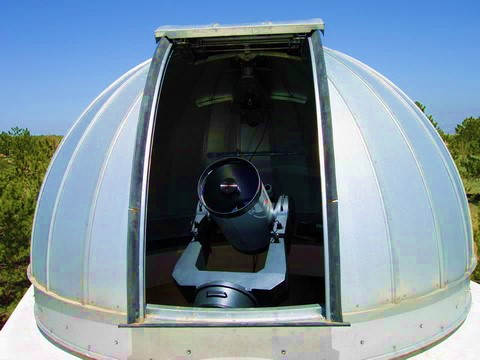
Those public events can be grouped in two as regular public observing nights and special astronomy events. In the public events, which are organized once in a month from March to November, various talks related to interesting astronomy subjects are given by professional astronomers and graduate students, in addition to the observing runs of popular celestial objects (such as Venus, Jupiter, Moon, etc.) observable at the time. In the special events, it is possible to observe periodic events such as lunar & solar eclipses, meteor showers, and planetary transits with the observing tools in the facility used for popular observations. Schools and large groups also visit the observatory regularly, based on their appointments. During these events, popular subjects are presented with respect to the average age and the level of the group; and an observing run is organized based on the time of the day of the visit, whether it’s a night observation or a solar observation. Within these three categories of events (public nights, special observations and regular visits) more than 10000 people visit the observatory each and every year. Some important celestial events (e.g. total lunar eclipses or Perseid meteor showers) attract over 3000 people on their own.
Soon after the establishment of the Astronomy Department at Ege University in 1963, a project to establish an observatory was developed. Kurudağ was chosen as the location for the observatory, a site far from urban light pollution but close (17 km (11 mi)) to the university's campus. The first instruments of the observatory were a 15-cm Unitron telescope, a Foucault pendulum and an Iris photometer. By 2013, night observations were becoming difficult due to glare from urban encroachment.
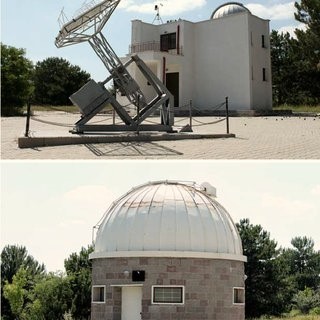
Currently, the Ege University Observatory has four telescopes with 48-cm, 40-cm, 35-cm and 30-cm diameter which are used for scientific studies, and many small telescopes which are used in the practice of students and popular astronomy studies.
The ÇOMÜ Ulupınar Observatory (UPO) (Turkish: Ulupınar Gözlemevi) is a ground-based astronomical observatory, which was established in 2001 and formally opened on 19 May 2002. It is also known as Çanakkale Observatory or the University Observatory. The Ulupınar Observatory is part of the Çanakkale Onsekiz Mart University (ÇOMÜ) Faculty of Science and Arts.
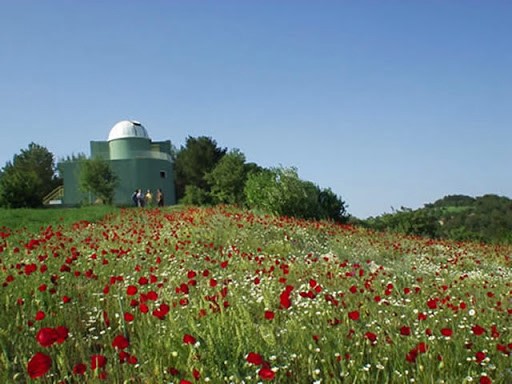
The observatory is located at an altitude of 410 m (1,350 ft) on the southern slope of the Radar Tepesi in Ulupınar village 10 km (6.2 mi) south-east of downtown Çanakkale and 5 km (3.1 mi) from the university's main campus. The observatory and its research center premises include a library, a workshop, a classroom, a conference hall and living quarters for night observing astronomers.
Ulupınar Observatory began its activity with a donated 0.40m telescope. It has expanded to a facility having seven telescopes operated by 30 scientists. There are three computer-controlled optical telescopes with several other instruments including the biggest telescopes in Turkey, among them a 1.22m telescope made in Germany. There is also an automated meteorological station fully active at the observatory.
The construction of the center started simultaneously with the establishment of the Faculty of Science, Department of Astronomy and Space Sciences. While the Department of Astronomy and Space Sciences was established in 1999, Radio Astronomy, which has not been studied in the country, has been chosen as the main field of study at the academic level. Specialization was targeted in this regard and the forward-looking structure of the department was realized in this way.

For booking visit to the observatory, you should visit the following link: http://astronomi.erciyes.edu.tr/?page_id=48
The building of the T60 telescope at the TUBITAK National Observatory (TUG) located at an altitude of 2500m on Mount Bakirlitepe in Saklikent District of the city of Antalya.

Telescope buildings, the Computer Centre and a hotel at the TUBITAK National Observatory (TUG) are located in Saklikent District of the city of Antalya. Seen at the top is the building of the Russian-Turkish RTT-150 optical telescope. RTT-150, the largest telescope of the observatory with a 150cm main mirror, was built in 1995 by St-Petersburg-based PLC LOMO.
The observatory is located at an altitude of 3,170 meters (10,400 feet) in the Karakaya Hills in Konakli village of eastern Erzurum province. The telescope is designed as a multipurpose equipment with scientific objectives such as cosmology studies, galaxies studies, solar system minor bodies studies, understanding of stars formation, planets studies, etc.
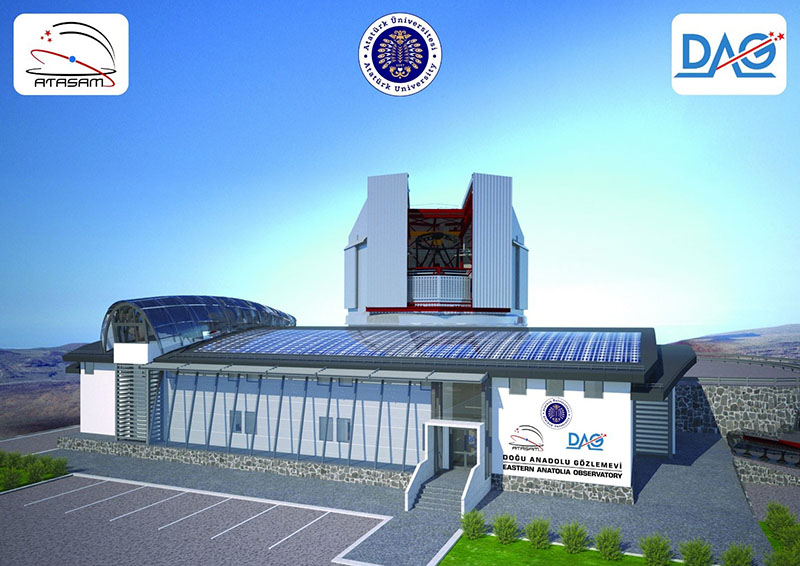
Construction of the facility began in 2012 with the support of the Turkish Presidency and the Astrophysics Research and Application Center of Erzurum’s Ataturk University. The observatory will receive the first light from space by the end of 2021.
ISTEK Foundation empowers modern and resourceful generations of students along the lines of Ataturk's principles and philosophies. Our foundation, founded by Bedrettin Dalan in 1985, has extended education from Kindergarten to University with 11 Primary Schools, 10 High Schools, 7 Science High Schools and Yeditepe University. ISTEK Foundation Belde Schools Science Center is a public science outreach project of the ISTEK Foundation. The Science Center comprises of a museum of astronomy, a digital planetarium and an observatory.
The Astronomy Museum is the first of its kind in Turkey. The museum comprises of a replica of the Lion Horoscope from Mt. Nemrut, a rich collection of meteorites, including metallic, chondrite, pallasite and tektite samples; scaled models of the Sun, planets, constellations and various astronomical objects; and interactive displays on large scale structure and life in the universe.

The planetarium is located above the museum. The 11 meter metal dome structure seats 50 under a 9 meter spherical screen. The fully digital system uses Starry Night and Layered Earth software enlivened by a state of the art sound system.

Located on the roof overlooking the Bosphorus the observatory houses two separate instruments for stellar, planetary and solar research.
The main telescope is a 40 cm Schmidt-Cassegrain catadioptric system. The telescope is mounted on a Software Bisque robotic mount and it can be controlled remotely.
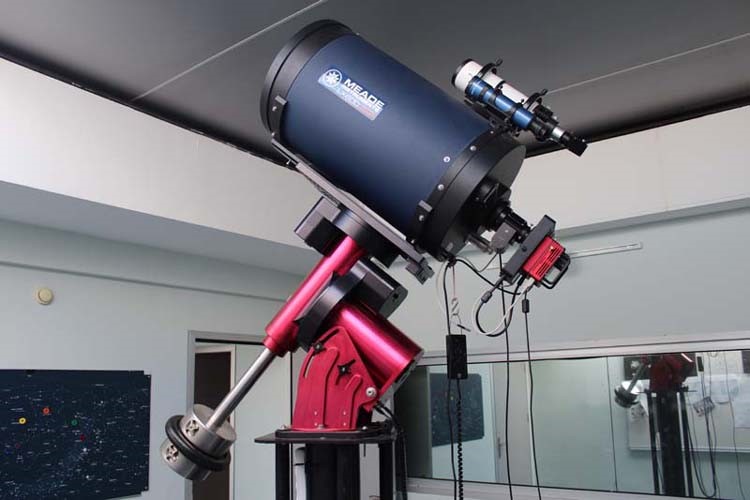
The observatory is located on the roof overlooking the Bosphorus the observatory houses two separate instruments for stellar, planetary and solar research. The main telescope is a 40 cm Schmidt-Cassegrain catadioptric system. The telescope is mounted on a Software Bisque robotic mount and it can be controlled remotely.
Konya Science Center is a science center, opened in April 2014. There are 6 different thematic exhibition galleries, 5 different workshop and laboratory areas, conference halls and show arenas. One of the 6 different thematic exhibition galleries is the Our Universe exhibition gallery. In this exhibition, you can learn and search about the Solar System, constellations, galaxies, black holes and many subjects about basic astronomy. With the Moon walking system, it is felt how to walk on the Moon.
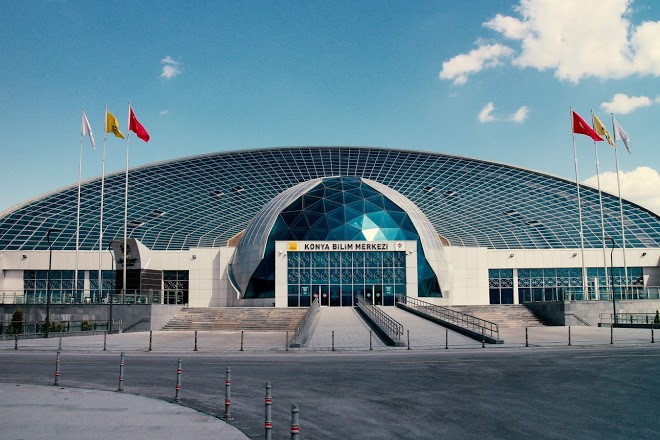
Konya Science Center Planetarium: It is a dome building with a spherical form of 14 m in diameter, with a capacity of 106 people, a digital and optomechanical system as 2 different systems, where special images and scientific films prepared with sky, celestial objects and similar images can be viewed. Astronomers provide astronomy trainings for all age groups. Web address: www.kbm.org.tr